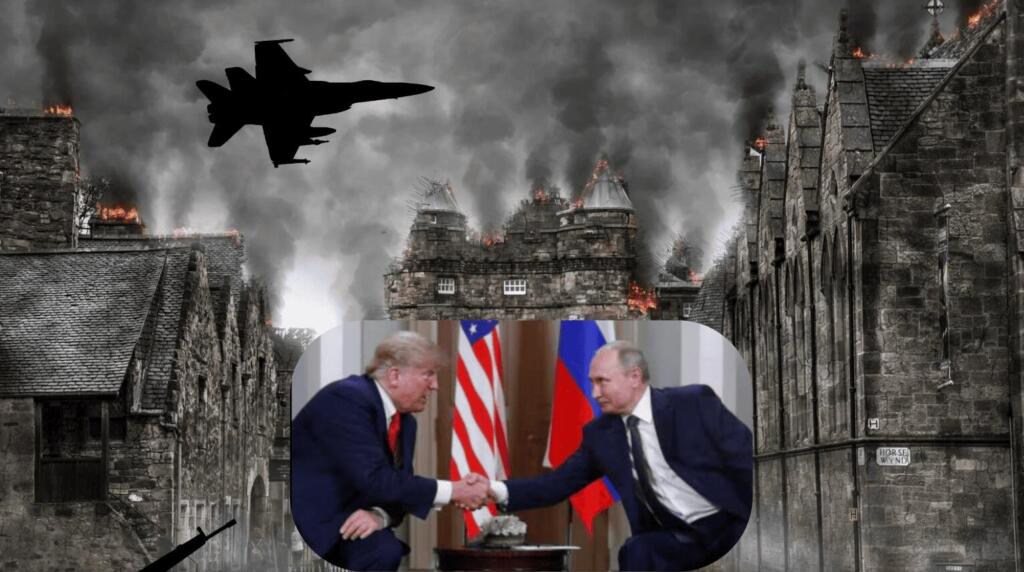The Story :
On January 9th, Thursday , Donald J Trump Confirmed that a high stakes meeting between him and the Russian President Vladimir Putin is being set up.
The agenda of the meeting would be to end the nearly 3 year old conflict between Russia and Ukraine.
Before a meeting with Republican governors at Mar-a-Lago in Palm Beach, Florida, Trump said, “He wants to meet, and we are setting it up.” in reference to Putin.
He further Stated “President Putin wants to meet. He has said that even publicly and we have to get that war over with. That’s a bloody mess,”
Reactions :
According to TASS, a Russian Media Agency , Kremlin’s Spokesperson Dmitry Peskov stated that Moscow welcome an outreach from the president elect of the U.S..
However until now no formal request has been issued for a formal meeting with the Kremlin from the Americans.
According to Reuters, Peskov further stated that, ‘It would be more appropriate to wait for Trump to take office first’.
It is to be noted that Ukrainian chief, Volodymyr Zelensky, has expressed his desire to work with Trump and believes he can stop the war.Although, his fear of seceding Ukrainian territory is also evident.
Moreover, team Ukraine has been making efforts to lure Trump in.
Analysts suggest that Ukraine is tailoring its strategies to align with Mr. Trump’s core interests, particularly boosting the American economy.
Talking to The New York Times (NYT), Oleksandr Kraeiv, head of the North America Program at Ukrainian Prism, a research institute, stated that emphasising the economic benefits for U.S. arms manufacturers could resonate with Mr. Trump. “We need to be practical and less ideologized,” Mr. Kraeiv said.
Why Is Trump Bullish on Stopping the war.
In the Florida Press Conference Trump touched on an important topic.
He pointed out how Russia was for all practical purposes, lured into waging this war.
For those who may not be familiar, here’s a brief summary of the events: NATO, which initially consisted only of countries from Western Europe and North America in the North Atlantic region, gradually expanded to include more nations in the basket.
After the Soviet Union collapsed in 1991, NATO began incorporating countries from Eastern and Central Europe, such as Poland, Hungary, the Czech Republic, and the Baltic states (Estonia, Latvia, and Lithuania).
For Russia, this expansion of the basket felt like a direct challenge to its security and influence.
Russia argued that during the 1990s, when Germany was being reunified. Western leaders had promised Soviet President Mikhail Gorbachev that NATO wouldn’t expand eastward. Though those promises were never formalised, Russia viewed NATO’s growth as a betrayal.
The presence of NATO forces in countries like Poland, Romania, and the Baltics only intensified these concerns, with Russia seeing it as a strategic encirclement.
The idea of Ukraine and Georgia potentially joining NATO was especially sensitive for Russia, as it saw this as a direct threat to its security. This fear played a key role in escalating tensions in Ukraine, eventually leading to Russia’s annexation of Crimea in 2014 and the conflict in 2022.
In the Press Brief Trump said “When I Heard the way that Biden was negotiating I said you’re going to end up in a war and it turned out to be a very bad war and it could escalate to be much worse than it is”.
The Cost Of War :
Trump’s case comes across even stronger when we realise that Defence spending now makes up 26% of Ukraine’s GDP. With the daily military costs exceeding $140 million. To sustain its economy and social services, Ukraine has heavily relied on Western financial aid.
The United States is the obvious biggest contributor to this aid.
Under Joe Biden, the United States has issued nearly $175 billion in total aid to Ukraine, with nearly $60 billion allocated for security assistance.
Here lies the problem, as Trump likely realizes—the pie is just one, and more pressing domestic issues need attention first.
While the U.S. continues funding the war in Ukraine, it risks diverting crucial resources away from domestic priorities such as rebuilding manufacturing sectors, creating jobs, and strengthening economic resilience.
The focus on Ukraine, while important globally, has meant less attention to bolstering the U.S.’s own economic and industrial capabilities.
Moreover, this diversion has hindered the U.S.’s ability to address the growing and long-term threat posed by China. With its expanding economy and military influence, China poses a greater challenge to global order than Russia.
U.S. involvement in Ukraine has not only distracted from countering China’s ambitions but has also inadvertently increased China’s global influence, especially as the U.S. overuses sanctions.
In this context, the hidden costs of the war become evident. A prolonged commitment to Ukraine may not align with America’s best interests. As Indian Prime Minister Narendra Modi has proposed, a negotiated ceasefire could offer the best path to de-escalation.
Conclusion :
The U.S. has committed nearly $175 billion in aid to Ukraine, with significant portions allocated for security assistance. However, the growing focus on Ukraine is diverting attention from domestic priorities—rebuilding manufacturing, creating jobs, and countering China’s increasing global influence.
Trump argues that the war could have been avoided with different negotiations, and the ongoing financial drain risks undermining America’s economic resilience.
While global security matters, shifting focus to domestic concerns and reducing reliance on foreign interventions may better serve the U.S. Moving forward, as leaders like Modi have advocated, a negotiated ceasefire could pave the way for de-escalation, benefiting both global stability and America’s future.
